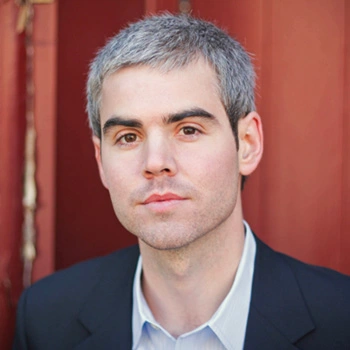
Peter C. Rockers, assistant professor, Boston University School of Public Health, is part of the team that developed a methodology to evaluate the impact of Novartis Access in Kenya.
We asked him about the progress of this study.
What are the key takeaways from the Boston University baseline study in Kenya?
Rockers: The baseline study produced several important findings. We found tremendous geographic variation in diagnosed hypertension and diabetes in Kenya. In counties with a predominantly rural population, there appears to be a large amount of undiagnosed disease, and strategies to increase access to diagnostic services in these areas may be important. In the meantime, demand for NCD medicines in these areas is quite low, and Novartis Access could improve efficiency by explicitly targeting higher-prevalence counties.
We also found a strong wealth gradient in access to NCD medicines, with the poorest patients least likely to have the medicines they need. Furthermore, we found that among patients who had medicines, the poorest actually paid the most for them.
Peter C. Rockers, Assistant professor, Boston University of Public Health
This seems due in part to the poorest being located in "medicine deserts," where a lack of local competition leads to higher prices and where traveling to distant outlets where prices are lower is difficult. Novartis Access could have a substantial impact on equity by targeting remote communities with low-cost medicines.
Additionally, we found that most NCD patients in Kenya purchase their medicines from private sector outlets. Prices at private outlets are on average higher than those at public and nonprofit outlets, but they seem to be more accessible for much of the population. It may be difficult for Novartis Access to control the final price of medicines distributed through the private sector, but offering medicines at private outlets may serve to reach a greater number of patients.
We are now midway through the study: What are the midline results? Can we see if Novartis Access is already having an impact?
Rockers: A manuscript describing the results of the study is forthcoming in The Lancet Global Health and will be published early 2019. We look forward to discussing our findings with the global health community soon.
Are the midline results calling for any adjustments in Novartis Access?
Rockers: In addition to generating evidence on program impact, the study has produced key process-related learnings that suggest a few potential adjustments to Novartis Access.
First, NSB should consider distributing Novartis Access medicines through the private sector in Kenya and possibly in other countries where the program will be rolled out.
Second, as Novartis Access is rolled out in additional countries in the coming years, Novartis Social Business should work with local government authorities to tailor the program and the medicine portfolio to each country’s regulatory scheme, institutional capacities, treatment guidelines, disease burden and financial resources. Conducting a local needs assessment during the early planning phase of each new rollout is important for this process.
Third, the healthcare system in Kenya is not equipped to treat breast cancer at the primary care level. This may also be the case in other countries where Novartis Access will be rolled out. NSB should consider strategies focused on secondary and tertiary health facilities where breast cancer is often diagnosed and treated, to strengthen the impact of Novartis Access on access to medicines for breast cancer patients.
How will these results be used for Novartis Access and beyond our company?
Rockers: The evaluation of Novartis Access in Kenya is, to my knowledge, the first to present experimental evidence on the impact of a pharmaceutical industry led access-to-medicine program. It is our hope that the evidence generated by this study will inform the company’s efforts to improve Novartis Access and other access programs going forward. The study also contributes to the public evidence base on strategies for improving access to medicines globally. The Novartis commitment to rigorous measurement and transparent reporting should serve as a standard for other industry efforts in this area.
Moving forward, how can the approach to measurement used in Kenya be simplified to more easily replicate it in other Novartis Access countries?
Rockers: As part of the study in Kenya, we refined and validated a mobile phone-based method for data collection that relies on repeated surveying of a relatively small cohort of households and health facilities. Setting up the system requires an initial round of field work to enroll respondents and collect phone numbers, but is entirely phone-based thereafter. Ownership of mobile phones globally – even in very rural settings – has reached high levels in recent years and this presents an opportunity. Our method of phone-based surveying can be replicated in other Novartis Access countries to measure program impact at a relatively low cost.
Do you see an opportunity for other partners such as governments, NGOs or financial players to adapt the approach?
Rockers: One key challenge that the global health community faces in addressing the growing NCD burden and achieving universal health coverage is a lack of infrastructure for measuring the state of medicine access in low- and middle-income countries. Without this infrastructure, it is very difficult to identify gaps and opportunities for policies and programs that aim to increase access. The phone-based surveying method that we have developed could be used to establish population-level surveillance systems to track indicators of access. The information produced by such a low-cost surveillance system could be made publicly available in near real-time for use by local governments, funders, patient and community groups as well as NGOs.
Peter C. Rockers of Boston University about #NovartisAccess measurement and evaluation efforts @Novartis_NSB



